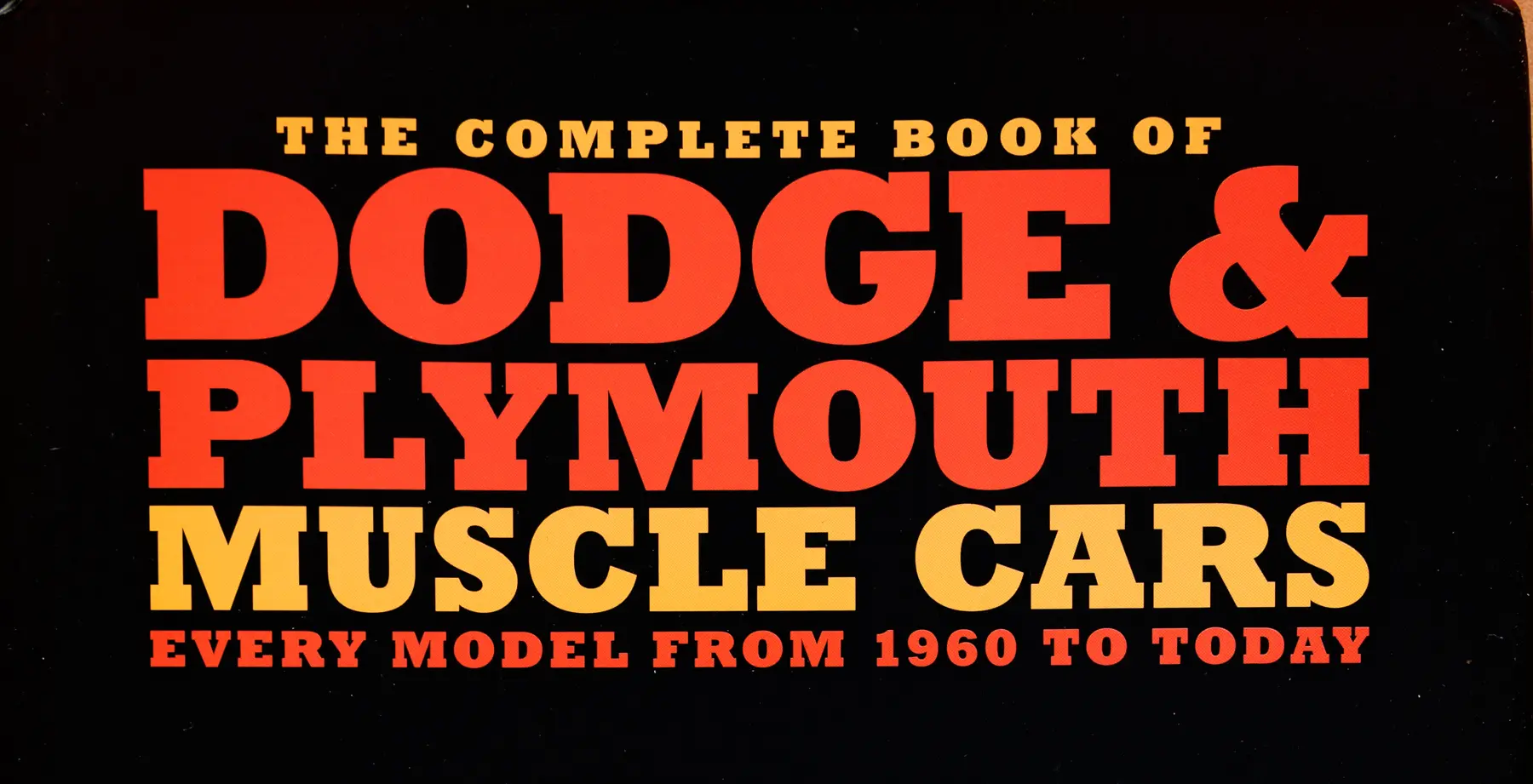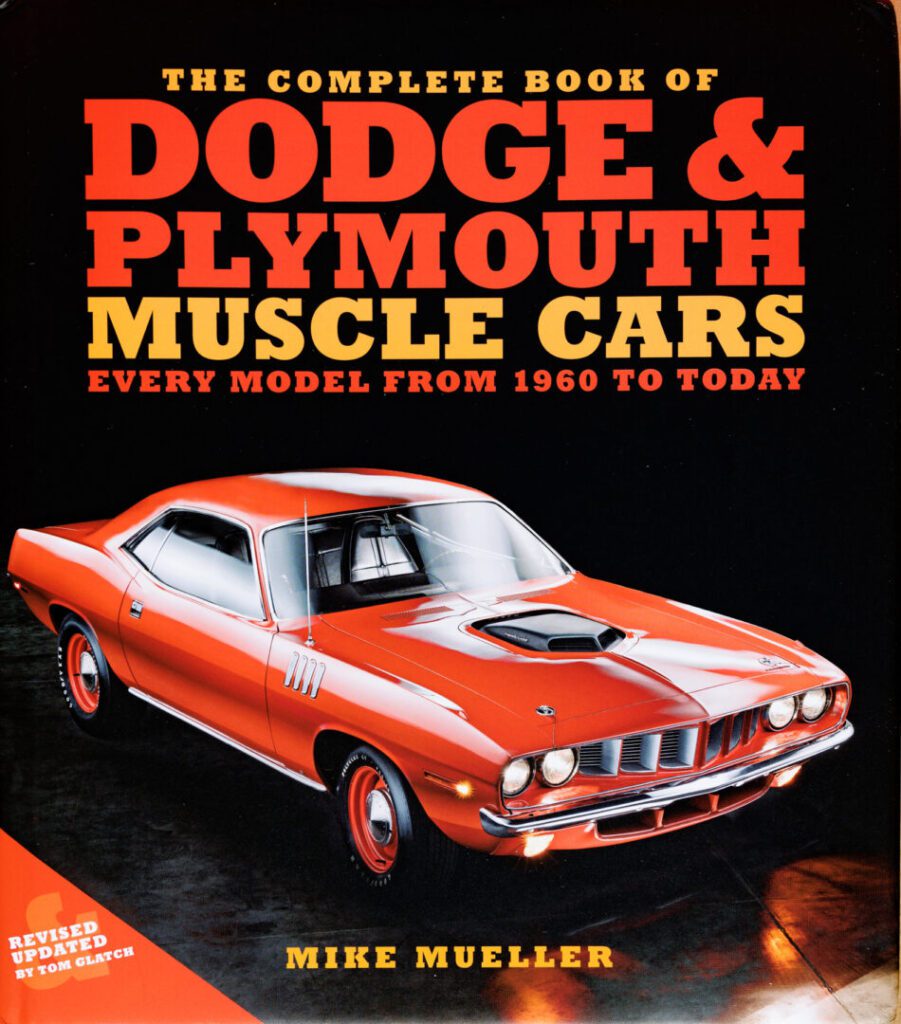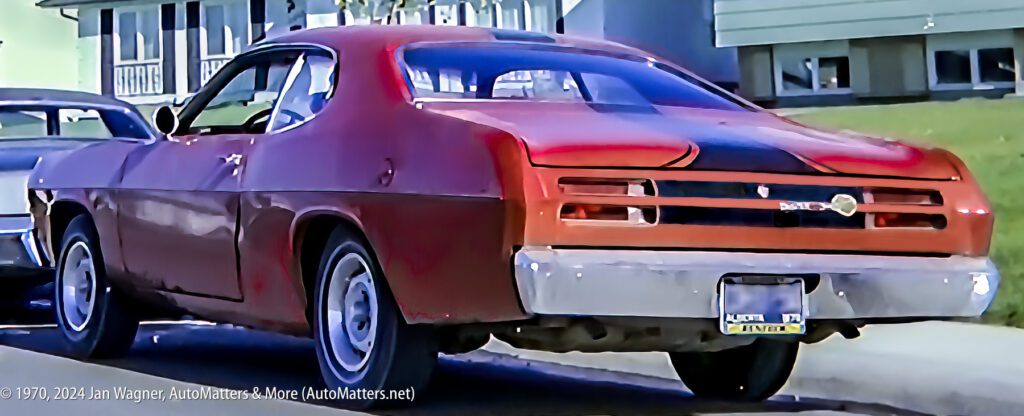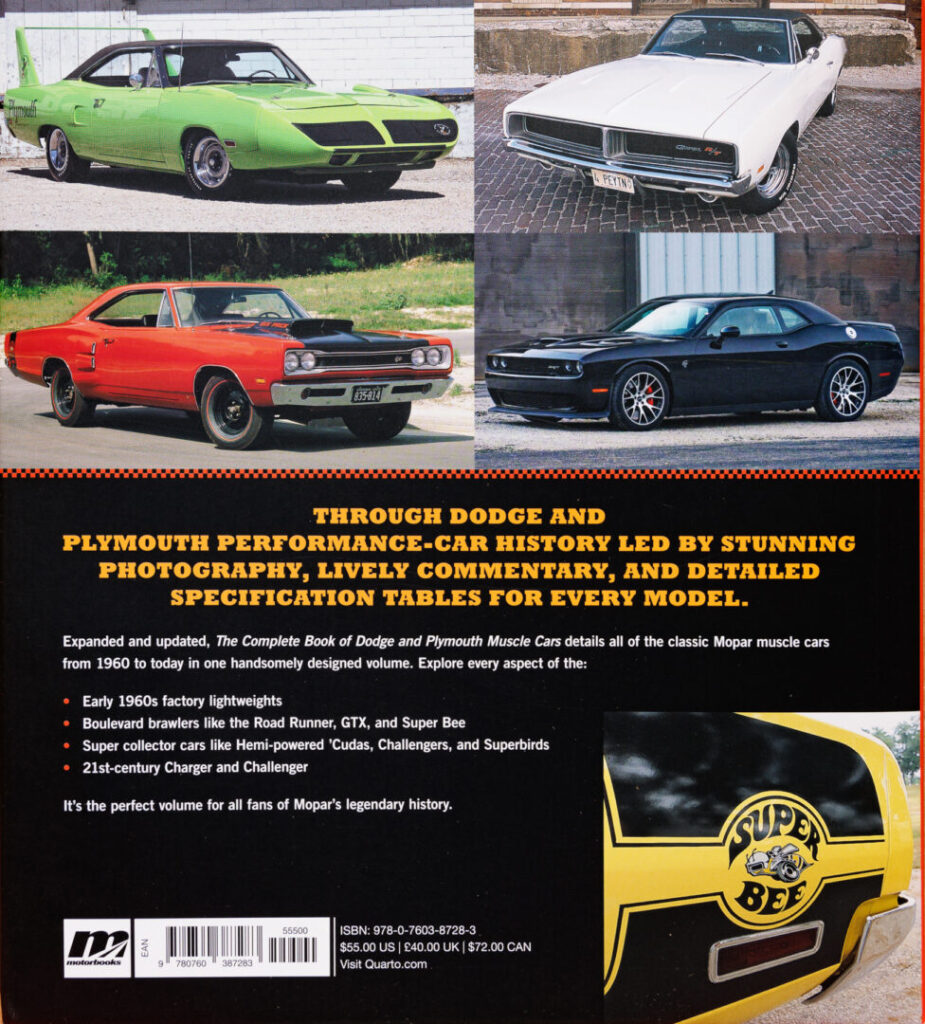
Relive your muscle car memories with The Complete Book of Dodge & Plymouth Muscle Cars
Starting way back in 1951 with the release of the V-8 Hemi engine, Chrysler (now Stellantis) has been building automotive high-performance cars for the motoring public. A large part of that exciting history is captured in all its automotive glory, complete with 500 color and black & white photos, informative narrative and statistics, in the large format, 320-page hardcover book entitled “The Complete Book of Dodge & Plymouth Muscle Cars — Every Model from 1960 to Today,” by Mike Mueller and updated by Tom Glatch.

No doubt like for many of you, high-performance Chrysler cars played a very important role in my life as I was growing up. My dad drove them, and he instilled his love of high-performance cars in me. He put many thousands of miles on them in relatively unpopulated Western Canada, as he worked as a travelling clothing salesman, transporting his heavy clothing samples from town to town, and city to city. The one that I remember best was our silver, four-door, 1968 Chrysler 300 with hideaway headlights, powered by a 440 cu in big-block V-8 — and dad knew how to drive it!

Many decades later, I still can remember the sense of anticipation and excitement that I felt each year in the fall when Renfrew Chrysler-Plymouth (in Calgary, Alberta) used to invite dad to a private reveal of the new Chrysler and Plymouth models. Of course, I went too!

As I was growing up, Dad was out of town a lot, earning a living for us. My mother did not have a driver’s license, so when we needed to travel from our home on the outskirts of Calgary to go shopping or to appointments, we took the bus. Back then we typically did our grocery shopping far away in downtown Calgary, in the grocery department of the Hudson’s Bay Company department store.

In the long, cold, snowy Calgary winters, our shopping trips were especially challenging. When I was very young, Calgary used electric trolley busses. Spring pressure connected the ends of a pair of long poles on the roof of the bus to overhead electric wires. In winter, with ice, snow and gravel covering the roads, these poles occasionally became disconnected from the overhead electric wires, requiring the driver to get out, go to the back of the bus and pull down on the spring-loaded cables to reconnect to the wires.

After our shopping trips we needed to walk, carrying our bags of groceries, up a long hill and then a few blocks further to our house. My mother once slipped on the icy sidewalk, while carrying those bags of groceries. I was horrified when I saw what looked like blood start to cover the icy sidewalk — until I realized that a glass ketchup bottle had broken and was spilling its contents!

It would have been so much easier for us if only my mother had a driver’s license. I was eager for the day when finally, years later, I would get my driver’s license, because then dad was going to buy a second car so that I could take mom shopping, to get her hair done and everything else.
No doubt dad’s love of high-performance Chrysler products was what motivated him to buy a bright red, 1970 Plymouth Duster 340, for the 16-year-old me. That car was practical, with a huge trunk that could carry lots of groceries. I was thrilled, and more than willing to drive my mother wherever she wanted to go! It was my first car, just like it was Tom Glatch’s first car.

I wanted to see how fast my Duster 340 would go so one day I drove out of Calgary on the highway and floored it. At about 130 mph I remember that it seemed to be floating! I slowed back down to the speed limit and never, ever did that again.
Somehow, I survived learning how to drive in that powerful, ill-handling car, and I’ve driven mostly high-performance cars ever since.
The Complete Book of Dodge & Plymouth Muscle Cars will be released by Motorbooks on June 18, 2024 for $55 (ISBN 9780760387283).

To explore a wide variety of content dating back to 2002, with the most photos and the latest text, visit “AutoMatters & More” at https://automatters.net. Search by title or topic in the Search Bar in the middle of the Home Page, or click on the blue ‘years’ boxes and browse.

Jan, I never considered buying the Perana and shipping it somewhere because by that time I was an expatriate and never knew my next assignment. As I mentioned, I moved to 5 more countries after SA and retired here in PA.
David.
David,
I understand completely.
Jan
Jan, a bit more on the South African Ford Capri Perana I owned back in 1975-77 while I lived in SA. It was the creation of Basil Green, who paired the SA built Ford Capri with an imported Mustang V8 engine, and named it Perana. Basil became a legend in SA and passed away two years ago in June 2022.
The Perana was built from 1970 through 1973. The early models were used exclusively (and very successfully) for racing, and with this reputation, Basil built a limited edition of 500 for the road.
When I arrived in SA in 1975, I was lucky enough to get one near the end of the run, and it was deemed a 1975 model year.
The Capri body and chassis was built in Ford’s SA factory, and the Mustang engine was the 5L V8 with 281 HP, coupled to a 4 speed synchromesh transmission.
Basil and the Perana are so highly regarded in South Africa that there is a revival of interest, with cars being rebuilt from the ground up with scavenged parts.
For more information on Basil Green and the Ford Capri Perana, just Google “1973 South African Ford Capri Perana”, and you will find a plethora (big word!) of articles.
To think I
David,
Thank you for sharing this additional information about the Perana. All you would need to make this a great article is a few photos.
Did you ever consider buying the Perana from your employer and then shipping it back to Canada?
Jan
Jan
Jan, thanks for your comments. What was the Alfa SUV you drove? Was it the Stelvio? The top line Stelvio Twin Turbo with 505HP is a joy to drive, but the lower trims are not as exciting.
I don’t think most Muscle Car fans would consider Jeep SRT8s to be muscle cars…maybe muscle trucks.
My South African Parana was most likely based on the 1973 model year Capri. Being a limited edition, I bought mine in 1975 and it was designated as a 1975. I Googled 1973 Ford Capri US and UK images, and they looked very similar to me.
Ford had, and still has, a factory in SA, so my Capri would have been built in SA to the British design. I also noticed, that for a few years, the US Capri was sold under both the Ford and Mercury brands. Seems strange.
David.
David,
The Alfa that I drove yesterday was the new 2024 Alfa Romeo Tonale. The one that I drove was the same beautiful green color as the one on Alfa’s website.
I agree that Jeep’s are not cars, but many people today (incorrectly) refer to SUVs as cars. That sort of explains why I wrote that.
Jan
I should know better. Here goes again. Does the definition of Muscle Cars include 4 doors like the Chrysler 300 and Dodge Charger? Sometimes I think it’s restricted to Coupes.
I owned a 1967 Mustang Fastback in beautiful metallic green. It had an underpowered 6 cylinder engine, was pleasant to drive, but it sure wasn’t a muscle car. That came later with the Shelby connection.
As did you, I had a 1970 Datsun 240Z, probably the first in Montreal, if not all Canada. While it had the basic bones of a muscle car, it was the first of its kind, and most people considered it a sports car.
More recently, I’ve owned all 4 generations of the Jeep Grand Cherokee, the last two being a 2006 SRT8 6.1L HEMI with 425HP, and a 2012 SRT8 6.4L HEMI with 475HP. I know these don’t qualify as muscle cars, but they sure perform like them!
I’ve saved the best for last. In the mid-1970’s, my company moved me from the UK to South Africa. I was eligible for a company car in SA, and test drove the generic Mercedes and BMW sedans of the era, and found them totally boring.
I was reading a magazine in a car showroom when I saw an interesting article. A car tuner company in SA had an agreement with Ford SA to install V8 Mustang engines in the South African Ford Capri Coupe, with full Ford warranties.
Muscle cars were unheard of in SA, so this car was going to be a limit edition. I convinced my boss (somehow) that this was the car for me. (Company cars are intended for comfort and convenience when business guests arrive).
We placed the order with Ford and in a few weeks my car arrived. It had the exclusive name of Ford Parana, with a blue Capri body, a Mustang V8 engine pumping out 250+HP, and a 4 speed manual transmission. It was South Africa’s only muscle car at the time, and very rare.
And now, 50 years later, car aficionados are trying to bring the Ford Parana back to life. South African petrol heads are scouring barns and old workshops and warehouses for individual parts to rebuild these cars from the ground up.
That’s my contribution to the history of muscle cars.
David
Thank you David,
For doors are okay with me. Dad’s 1968 Chrysler 300 with its 440 V-8 certainly drove and sounded like a muscle car of that era.
It’s interesting that you were less than impressed with the fun to drive factor of those Mercedes and BMWs. Yesterday I drove a new, small Alfa SUV on twisty roads in the hills above Malibu, here in California. While the Alfa handled well enough, its ICE engine was gutless and had lag on acceleration. Also, it had no exhaust note, which is not what I expected from Alfa Romeo. Instead, it was quiet.
I’ll bet you wish that, no matter how difficult it might have been to accomplish, that you had kept that Pirana. Was the Ford Capri that it was based on the very early 1970’s Capri? I preferred those to the heavier-looking European Capris that came next, and certainly to the Mustang-looking Capri.
To me, your high-powered Jeeps would also qualify as muscle cars.
Jan
Jan, I had just written a short essay on muscle cars, but then I shifted to my dictionary page to check a spelling. When I returned to comments, my typing had disappeared.
I’ll try for a shorter version later, but now I’m all tuckered out.
David.
Save, save, save… save your work.